[:en]
Mistakes using plasma devices are rare, however, it is worth discussing the most common ones, so if you know them you will be able to recognize them and avoid them altogether. Generally taking proper online training for each type of treatment is sufficient to have all the necessary knowledge in order to perform these aesthetic treatments correctly. Generally, the best way to avoid making mistakes using plasma devices is to:
→ Take appropriate training from manufacturers. The easiest way to avoid mistakes using plasma is studying the training manual and the instruction manual of the respective device you have. If you are taking our online training, perform all the appropriate exercises suggested there and pass our online tests, this will provide you with the basic knowledge required in order to start performing aesthetic treatments using plasma correctly. This may sound quite obvious however most mistakes have been made by those who failed to read the manuals and study the training material regarding the relevant procedure before carrying them out. So far no mistakes have been reported by those who have undergone our online training assessment. Please bear in mind that there are a lot of free information on our online training platform regarding each individual procedure. therefore it is worth taking your time and revise all the relevant information before carrying out any treatment you are not familiar with.
→ Patch test. Patch testing an area is very important to prove that the area will not have an adverse reaction to the specific treatment.
→ Practice on the "test meat" before stat carrying out any aesthetic treatments.
→ Start always using very low-intensity treatments in general and gradually increasing the intensity of the treatment as you see it fit.
→ Informing your clients well (using the appropriate informed consent forms) before going ahead with the treatment is also very important and can avoid surprises later.

Points 1 to 4 sound like a lot of work, however, please bear in mind that, the most added value is provided by you, the aesthetic practitioner. Taking the time to learn all the knowledge about relevant treatments you will be performing and perfecting your skills is very important. Additionally, plasma is one of the few technologies in aesthetics which has a vast array of intended uses from localized skin tightening, benign skin lesion removal, tattoo removal etc. The initial work of learning has to be done only once, however later, all the knowledge you require will stay with you and will constantly add value to your customers.
Therefore the best way to avoid mistakes, in general, is to have the knowledge in order to use your plasma device for each specific type of aesthetic treatment. At the beginning it may be challenging, however, it will become second nature over time.
Remember that voltaic arcing or (plasma) devices are ablators (destroy soft tissues) at any given power level, even the lowest. After all, you can also use them to remove any type of benign mole. Therefore, the possibility of removing more of the stratum corneum (epidermis) always exists. This is possible if you use the plasma device and you insist for too long on the same area despite the power level used. Of course, the lower the power level the more you will have to insist on any given area to cause the removal of the dermal layer, conversely the higher the power setting the less it will take to cause the same degree of dermal damage. This, in turn, can cause scars and other adverse reactions. Normally the technique used for localized skin tightening using voltaic plasma is the spot mode or spot operation. This is because the spot mode is far easier to teach and learn that the spray operation. For this reason, spray operation mistakes are extremely rare using plasma for localized skin tightening.
The best way to avoid mistakes using the spray operation in skin tightening is to only use the spot operation until you have plenty of experience in localized skin tightening using the spot operation. (which is far easier to learn).
This is also a rare type of mistake in the use of plasma devices for aesthetic uses, however, the rare instances had been due to the lack of training of the users. After the users received correct training the issue was resolved in all instances.
The common mistakes are:
- applying the voltaic plasma spots for too long. Please note that applying the arc for too long can happen at any given power level.
- placing the voltaic spots too close to each other while applying them for too long.
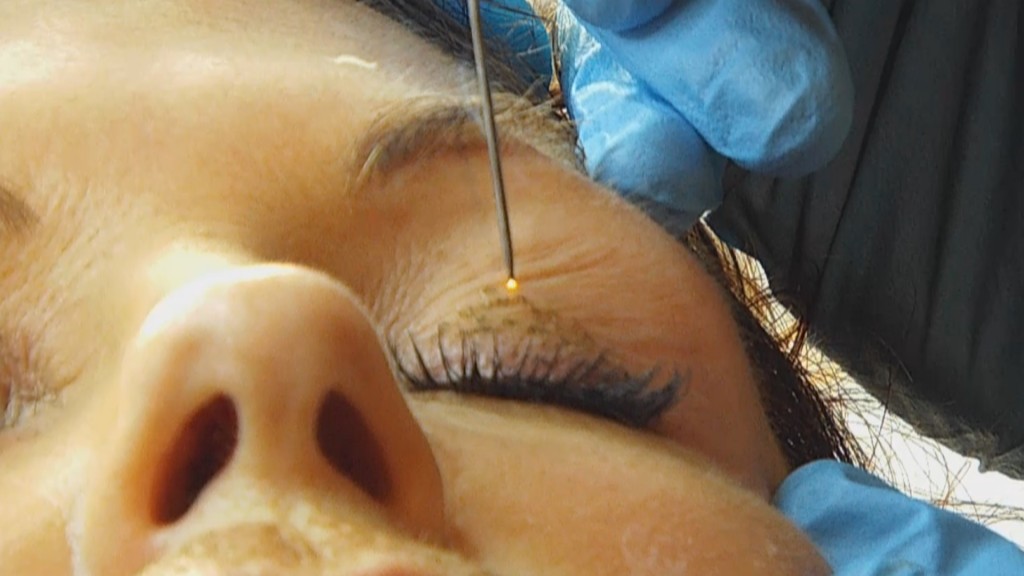
Plasma eyelid tightening treatment using the spot mode.
This type of mistake is easily avoidable by not only using our online training but also using low-intensity treatments when you first start using any voltaic plasma devices. As a rule of thumb when first carrying out these types of treatments it is always better to start using moderation and apply the lowest possible intensity treatment this means that you are learning how to use the device correctly and then you can progressively increase the treatments intensity little by little as you start seeing the results and getting the feedback from your clients. If you want to learn the correct techniques and avoid this type of mistake please Click Here to access this free information.
Always remember that it can take a while to master all the skills required to use plasma devices for aesthetic applications but this time investment is ultimately worthwhile.
Aesthetic practitioners, driven by the desire to achieve the bold results advertised as blepharoplasty sometimes attempt to use plasma devices at very high intensity. Please bear in mind that sometimes achieving the same results as a blepharoplasty is not physically possible (plasma is heavily advertised as nonsurgical blepharoplasty by some manufacturers). Performing high-intensity treatments is not a mistake "per se", however, the likelihood of potential adverse reactions increases as the intensity of the treatments is increased.
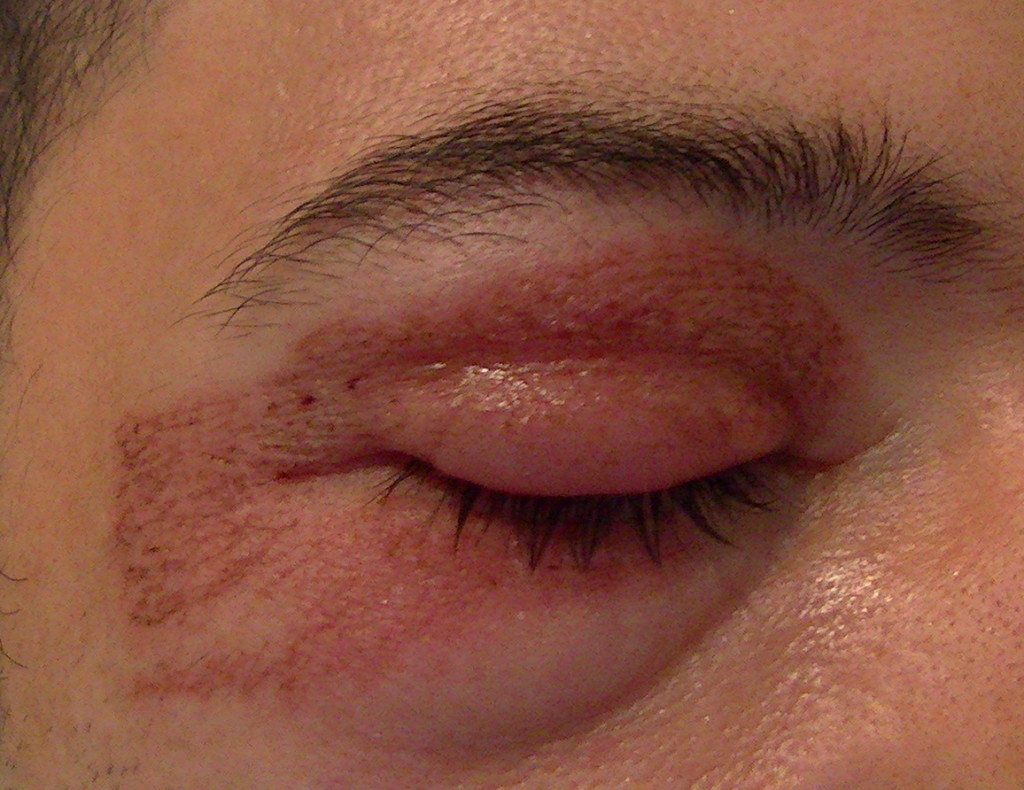
Major swelling after upper eyelid tightening. The individual experienced pain for the first hours after the treatment. Major swelling and pain can be major caused of discontent amongst customers.
High-intensity treatments can lead to customer's discontent mainly due to the sometimes severe swelling and pain following the treatment. Therefore it is always advisable to carry out only low medium intensity treatments.
In order to learn how to perform plasma eyelid tightening treatments correctly, we have published a dedicated webpage helping you learn and distinguish the difference between low/medium and high-intensity treatments and start performing these treatments correctly. This will help you avoid this type of mistake.
Expectations of Number of treatments required.
Please bear in mind that in general tattoos require several treatments to be faded to an acceptable level. Not all tattoos can be removed guaranteeing seamless results despite the device (including lasers) or technique used. Therefore, one of the mistakes made in tattoo removal in general, is managing expectations. Normally, people expect seamless results in only a few sessions, however the reality is that several sessions may be required to achieve an acceptable fading of the tattoo. For example, laser tattoo removal generally requires over 10 sessions in order to achieve the desired results for most types of tattoos.
For more information about the number of sessions required for achieving acceptable results using lasers please click here.
Expectations of seamless results.
This is one of the most common mistakes in managing expectations, people come to you expecting the tattoo to be removed seamlessly (leaving neither trace nor mark). Unfortunately, in most cases, this is not possible despite the device used, including the most expensive tattoo removal lasers claiming seamless removal results in one session. These expectations are due to the type of advertising carried out by cosmetic clinics. and certain manufacturers Please note that on occasion, tattoo removal can lead to seamless results, however seamless results in tattoo removal is more the exception than the rule.
Infections.
The aftercare after tattoo removal procedures is very important like it was after having it done in the first place, this is because the lack of proper information about the aftercare after plasma treatments for tattoo removal can lead to infections simply due to poor aftercare. Infections in turn, increase the likelihood or developing scarring and other adverse reactions.
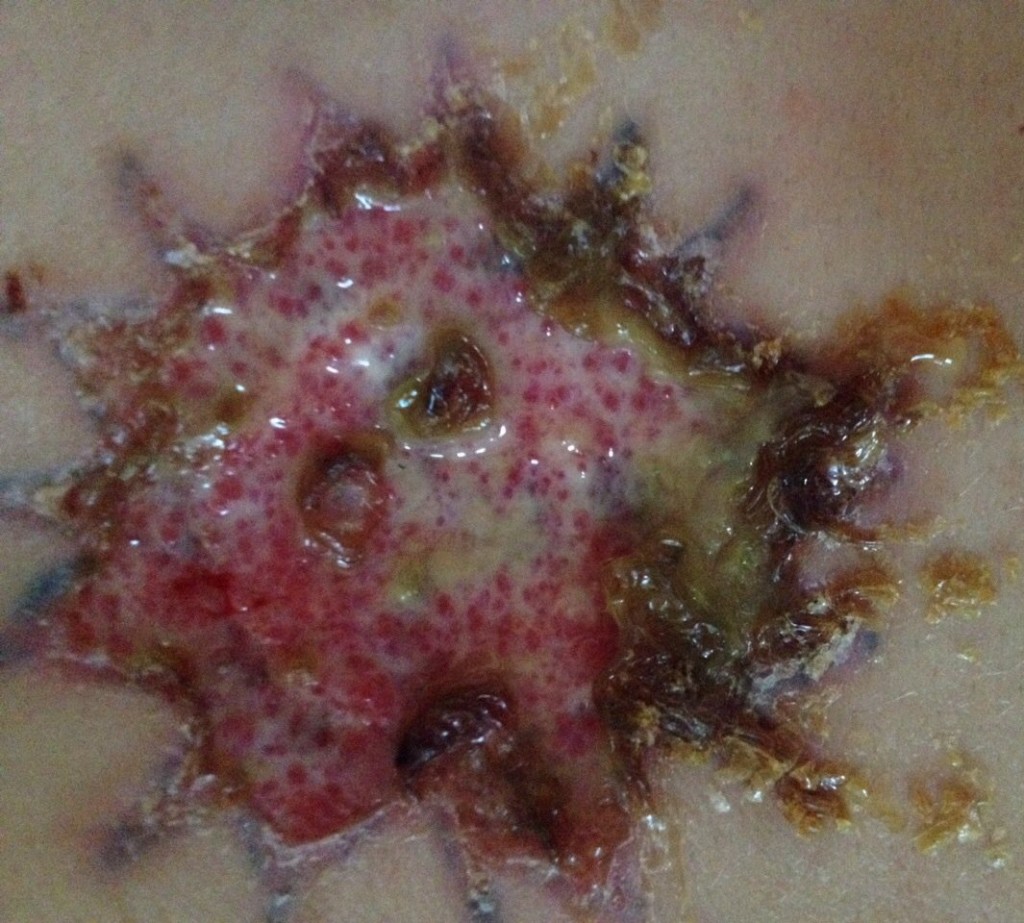
Infection after a tattoo removal procedure which eventually led to scarring.
All these mistakes can be avoided by using the correct consent forms and handing over a good aftercare protocol to the client.
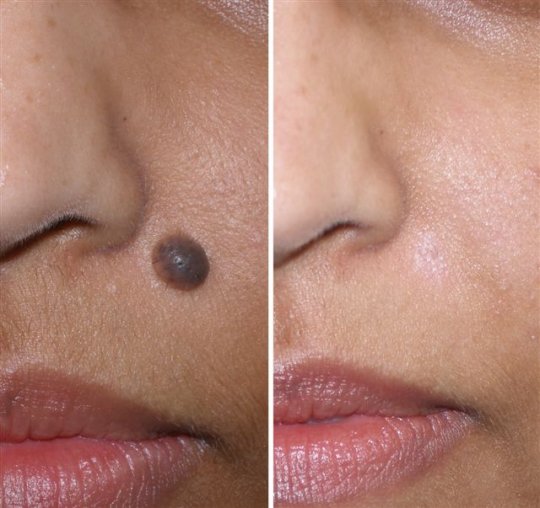
Generally, the results of mole removal using plasma are very good and in the vast majority of cases, it is possible to achieve seamless results (it is not possible to locate the place where the mole was previously located). It is very clear that there are many factors which contribute to the final results of plasma benign skin lesion removal and the way the procedure is carried out is only one of them. This does not mean that seamless results are not possible, however, it is not possible to guarantee the skin lesion removal is going to lead to seamless results without leaving some sort of permanent mark or skin texture change. This is true despite the device and method used in order to remove the benign skin lesion.
This is because some people may be more prone to developing keloids, scarring, different skin texture etc. If you advertise and clearly promise seamless or "scar-free" results, should a skin texture change occur then you may find customer dissatisfaction? In our experience, people will undergo all sort of benign skin lesion removal even if you clearly state that the results are likely to be seamless but no guarantee can be put in place. In the unlikely case of the results not to be completely seamless, generally, people will be far happier with a slight mark or skin texture change than their previous mole or skin lesion.
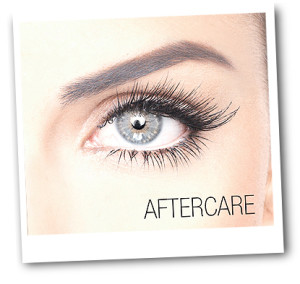 This is another common mistake which is easily avoidable. It is it is highly advisable to hand over an aftercare leaflet tot he client for the type of treatment carried out. This can be done in many ways including electronically using emails etc. Not handing over clear instructions on the appropriate aftercare could cause some issues because sometimes, unsure of the aftercare, people use the incorrect products and this has sometimes led to permanent adverse reactions including scarring following inflammatory infections.
This is another common mistake which is easily avoidable. It is it is highly advisable to hand over an aftercare leaflet tot he client for the type of treatment carried out. This can be done in many ways including electronically using emails etc. Not handing over clear instructions on the appropriate aftercare could cause some issues because sometimes, unsure of the aftercare, people use the incorrect products and this has sometimes led to permanent adverse reactions including scarring following inflammatory infections.
Remember that verbally explaining the aftercare is not sufficient in a commercial environment as there may be misinterpretations or misunderstandings, hence always have pre-printed leaflets to hand over to your client. You can also opt to have automated emails sent to every customer which includes the aftercare instructions. In any case, handing clear instructions in writing is the best practice in a commercial context.
Plasma treatments consist in inflicting a controlled skin burn in case of skin tightening. In case of benign skin lesions removal, the treatment consists in "burning the lesion away", therefore the inherent nature of the treatment has potential adverse reactions which are unavoidable. This is true despite the device used and the claims made by different manufacturers asserting their devices to be "100% safe". Additionally, the huge role to the outcome is played by the after-care, therefore it is essential that the appropriate consent forms are put in place prior to performing the treatments.
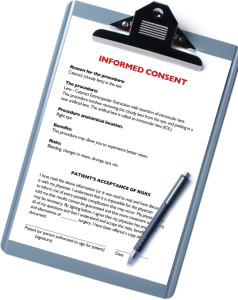 Generally, these plasma aesthetic treatments use the heat propagation caused the superficial burn in order to induce the skin tightening. Although advertised as completely 100% safe by some manufacturers, they fail to disclose the some of the intrinsic potential adverse reactions to the treatments using these types of devices in general. These treatments, due to their inherent nature, cause a burn and depending on how the burn has been inflicted or the individual skin reaction a number of adverse effects r reactions can occur. Although rare, there is no way to guarantee 100 % no adverse reactions will occur. What happens is that most manufacturers fail intentionally to disclose all the adverse reactions which occur with their devices. The lack of information elsewhere about these adverse reactions does not mean they do not occur. The likelihood of adverse reactions to occur can be minimized in several ways but never completely avoided despite the type of device used and cannot be eliminated by design.
Generally, these plasma aesthetic treatments use the heat propagation caused the superficial burn in order to induce the skin tightening. Although advertised as completely 100% safe by some manufacturers, they fail to disclose the some of the intrinsic potential adverse reactions to the treatments using these types of devices in general. These treatments, due to their inherent nature, cause a burn and depending on how the burn has been inflicted or the individual skin reaction a number of adverse effects r reactions can occur. Although rare, there is no way to guarantee 100 % no adverse reactions will occur. What happens is that most manufacturers fail intentionally to disclose all the adverse reactions which occur with their devices. The lack of information elsewhere about these adverse reactions does not mean they do not occur. The likelihood of adverse reactions to occur can be minimized in several ways but never completely avoided despite the type of device used and cannot be eliminated by design.
Additionally, there are some immediate not pleasant reactions to some of the plasma aesthetic treatments which are inherent to them and unavoidable, and they should all be included in the informed consent form. To help the users of plasma devices for aesthetic purposes we have published the best consent forms for these types of procedures.

As an example of the adverse reactions which occur after these treatments are the swelling, discomfort and sometimes pain after plasma eyelid tightening. It is important to warn the clients of these important reactions to the treatment. Because of failing to inform them sometimes cause unnecessary worries and discontent.
Too many times peoples' expectations of plasma treatments are overstated by claims of upper eyelid tightening to be allegedly the same as a blepharoplasty. This is a way to advertise the plasma eyelid tightening treatment which contributes to justify the high prices charged for these types of devices and the plasma eyelid tightening procedure. We have worked with all sorts of plasma devices for eyelid tightening, unfortunately, this has not proved to be the substitute for surgery. Unfortunately, as 2017, the miracle machine has not been invented yet which can accomplish the same results as surgery without using a scalpel.
In our view, this type of advertising is to be avoided altogether. In the vast majority of cases, plasma eyelid lifts are not procedures which can replace the results of surgical procedures, and in some cases should not be suggested as an alternative to surgery.
 Claims of achieving Blepharoplasty results using plasma or voltaic arcing for upper eyelid tightening, in most cases, these are simply not realistic. What is to be expected after plasma upper eyelid tightening is a minor improvement of the appearance of saggy upper eyelids. In this website, we only show real results and the real before and after including how the treatments were carried out.
Claims of achieving Blepharoplasty results using plasma or voltaic arcing for upper eyelid tightening, in most cases, these are simply not realistic. What is to be expected after plasma upper eyelid tightening is a minor improvement of the appearance of saggy upper eyelids. In this website, we only show real results and the real before and after including how the treatments were carried out.
It is not advisable to promote unrealistic results because it has been proven already that promoting less bold and more realistic outcomes will lead to the clients to be more satisfied in the long run.
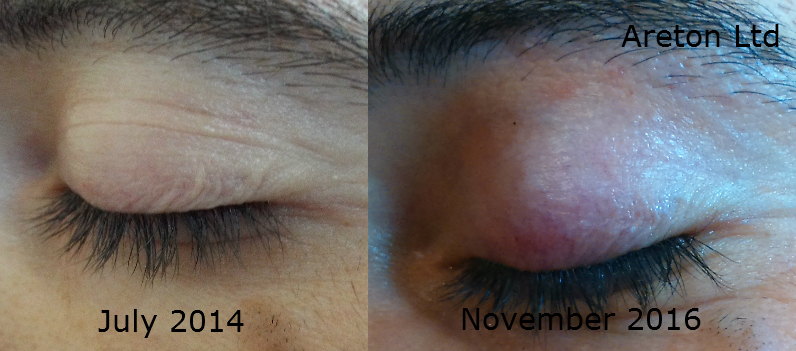
Real long-term skin tightening after two medium intensity plasma treatments.
This mistake can be easily avoided by making more realistic advertising. If you have any of our devices you can simply use the advertising videos on our channel which show how the treatments were carried out and the real results without any embellishment.
This is yet another example of advertising which should be avoided. This is because carbonization (also referred as sublimation for advertising purposes) does not cause the skin to shorten. It is not currently physically possible to shorten the skin or shrinking it permanently by burning it superficially using any laser or plasma (voltaic arcing) devices. Those advertising carbonizations as skin shortening bring forward the temporary skin shrinkage caused by the deep dehydration of the skin immediately after the carbonization.
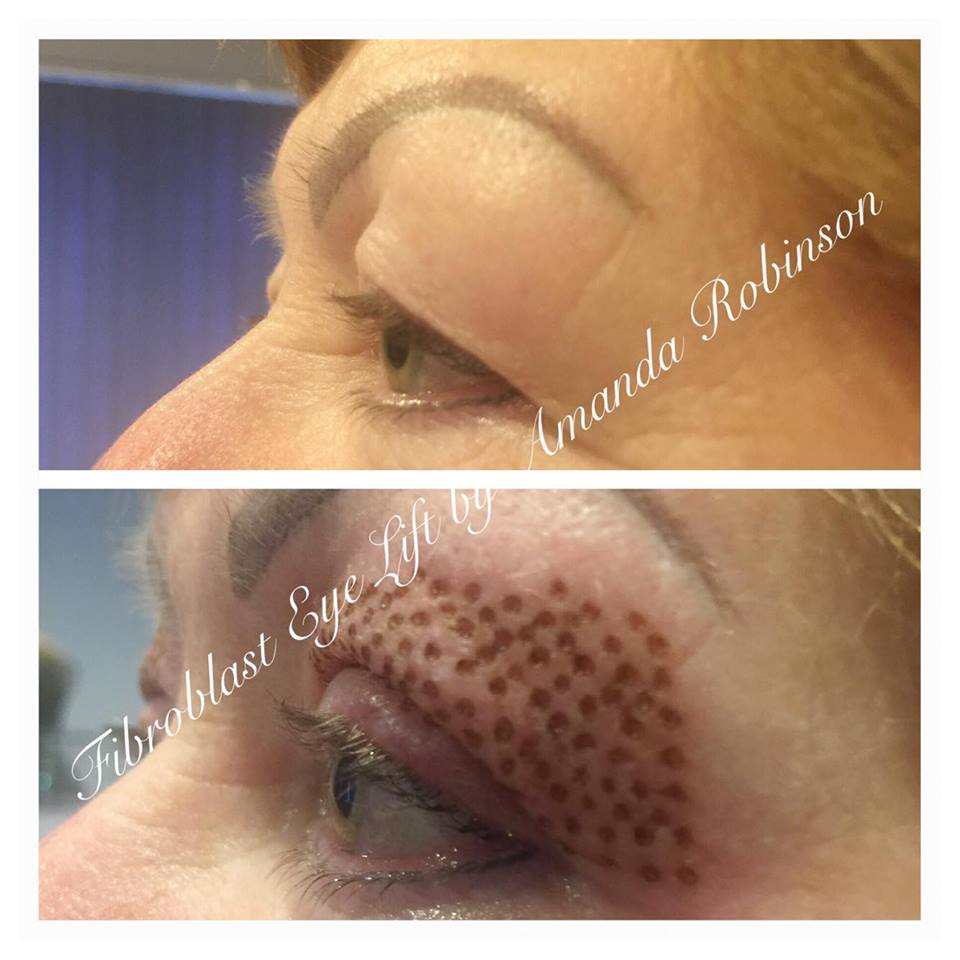
Please note that this is not a permanent result as the skin will change dramatically over the course of the days following the treatment with swelling and order normal reactions. The skin will re-hydrate on its own accord. The real results of plasma eyelid lift are not skin shortening or shrinkage, but localized skin tightening which then leads to a minor improvement in the appearance of sagging or loose skin.
Example of plasma skin tightening for wrinkle attenuation done wrong.
This is an example of plasma skin tightening applied in the wrong way. The purpose of the treatment was to reduce the appearance of the vertical expression lines between the eyes. We do not know what technique was used. It is supposed that the spray operation may have been used inside the lines themselves. This is a deduction from the picture only, this cannot be for sure as there is no video footage of the procedure.

Picture of the subject soon after the procedure.
It is thought that the aesthetic practitioner applied the arc inside the wrinkles themselves. This caused a significant accentuation of the vertical lines, the exact the opposite of the very purpose of the procedure.
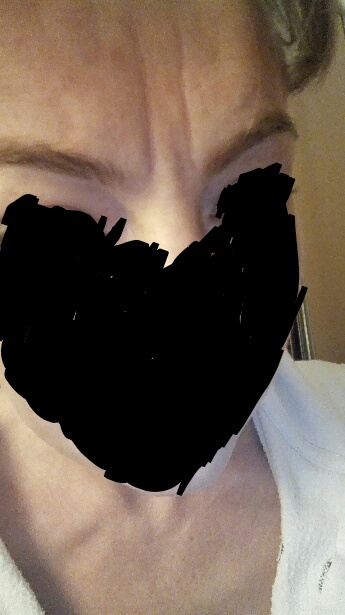
Picture of the subject after the area heeled. The atrophic vertical lines (deep scars) are very clear. The lines have been accentuated instead of being reduced.
In order to avoid these types of mistakes, a simple reading of the main principles of plasma devices would have avoided this mistake. It has been repeated throughout this website and the different training material that in order to apply plasma skin tightening in order to improve the appearance of fine lines the preferred technique is the spot operation and the spots have to be applied on the border of the lines and never inside the lines themselves.
Related Videos
[:es]
Los errores en el uso de dispositivos de plasma son extraños, sin embargo, vale la pena discutir los más comunes, por lo que si los conoce, podrá reconocerlos y evitarlos por completo. En general, basta con una educación en línea adecuada para cada tipo de tratamiento para tener todos los conocimientos necesarios para realizar estos tratamientos estéticos correctamente. En general, la mejor manera de evitar cometer errores al utilizar dispositivos de plasma es:
→ Tomar la educación adecuada de los fabricantes. La forma más fácil de evitar errores al usar plasma es estudiar el manual de capacitación y el manual de instrucciones del dispositivo respectivo que tiene. Si está tomando nuestro entrenamiento en línea, realice todos los ejercicios apropiados sugeridos allí y pase nuestras exámenes en línea, esto le proporcionará los conocimientos básicos necesarios para comenzar a realizar los tratamientos estéticos utilizando plasma correctamente. Esto puede parecer bastante obvio, sin embargo, la mayoría de los errores han sido cometidos por aquellos que no leyeron los manuales ni estudiaron el material de capacitación sobre el procedimiento pertinente antes de llevarlos a cabo. Hasta ahora, no se han reportado errores por parte de aquellos que se han sometido a nuestra evaluación de capacitación en línea. Tenga en cuenta que hay mucha información gratuita en nuestra plataforma de capacitación en línea con respecto a cada procedimiento individual. por lo tanto, vale la pena tomarse su tiempo y revisar toda la información relevante antes de realizar cualquier tratamiento con el que no esté familiarizado.
→ Prueba de parche. La prueba de parche en un área es muy importante para demostrar que el área no tendrá una reacción adversa al tratamiento específico.
→Practique en la "carne de prueba" Llévelo a cabo antes de realizar cualquier tratamiento estético.
→ Comience siempre a utilizar tratamientos de muy baja intensidad en general y aumente gradualmente la intensidad del tratamiento según lo considere conveniente.
→ También es muy importante informar a sus clientes (utilizando los formularios de consentimiento informado apropiados) antes de seguir adelante con el tratamiento y pueda evitar sorpresas más adelante.

Los puntos 1 a 4 parecen mucho trabajo, sin embargo, tenga en cuenta que el profesional de la estética proporciona el valor más agregado. Tomarse el tiempo para aprender todo el conocimiento sobre los tratamientos relevantes que realizará y perfeccionar sus habilidades es muy importante. Además, el plasma es una de las pocas tecnologías en estética que tiene una amplia gama de usos previstos para el estiramiento de piel localizada, la eliminación de lesiones benignas de la piel, la eliminación de tatuajes, etc. El trabajo inicial de aprendizaje debe realizarse una sola vez, pero más tarde, todo el El conocimiento que necesita se quedará con usted y agregará constantemente valor a sus clientes..
Por lo tanto, la mejor manera de evitar errores, en general, es tener el conocimiento para utilizar su dispositivo de plasma para cada tipo específico de tratamiento estético. Al principio puede ser desafiante, sin embargo, se convertirá en una segunda naturaleza con el tiempo..
Recuerde que los dispositivos de arco voltaico o (plasma) son ablatores (destruyen los tejidos blandos) en cualquier nivel de potencia dado, incluso el más bajo. Después de todo, también puede usarlos para eliminar cualquier tipo de lunar benigno. Por lo tanto, siempre existe la posibilidad de eliminar másestrato córneo (epidermis). Esto es posible si usa el dispositivo de plasma e insiste durante demasiado tiempo en la misma área a pesar del nivel de potencia utilizado. Por supuesto, cuanto más bajo sea el nivel de energía, más tendrá que insistir en que un área determinada cause la eliminación de la capa dérmica; a la inversa, cuanto mayor sea el ajuste de energía, menor será la causa para causar el mismo grado de daño dérmico. Esto, a su vez, puede causar cicatrices y otras reacciones adversas. Normalmente, la técnica utilizada para el estiramiento de piel localizada con plasma voltaico es el modo de punto o la operación de punto. Esto se debe a que el modo spot es mucho más fácil de enseñar y aprender que la operación de barrido (Spray). Por esta razón, los errores en la operación de barrido son extremadamente extraños en el uso de plasma para el estiramiento localizado de la piel..
La mejor manera de evitar errores al utilizar la operación de barrido (Spray) en el estiramiento de la piel es usar solo la operación de punto (spot mode) hasta que tenga mucha experiencia en el estiramiento de la piel localizado utilizando la operación punto. (que es mucho más fácil de aprender).
Este también es un tipo raro de error en el uso de dispositivos de plasma para usos estéticos, sin embargo, los casos raros se debieron a la falta de capacitación de los usuarios. Después de que los usuarios recibieron la capacitación correcta, el problema se resolvió en todos los casos.
Los errores comunes son:
- Aplicando los puntos de plasma voltaico durante demasiado tiempo Tenga en cuenta que la aplicación del arco durante demasiado tiempo puede ocurrir en cualquier nivel de potencia.
- colocar los puntos voltaicos demasiado cerca uno del otro mientras se aplican durante demasiado tiempo.

Tratamiento de estiramiento de párpados con plasma utilizando el modo spot..
Este tipo de error es fácilmente evitable no solo utilizando nuestra capacitación en línea, sino también usando tratamientos de baja intensidad cuando comienza a usar cualquier dispositivo de plasma voltaico. Como regla general, cuando se realizan estos tipos de tratamientos por primera vez, siempre es mejor comenzar a usar la moderación y aplicar el tratamiento de menor intensidad posible. Esto significa que está aprendiendo a usar el dispositivo correctamente y luego puede aumentar poco a poco la intensidad de los tratamientos. A medida que comience a ver los resultados y obtenga los comentarios de sus clientes. Si desea aprender las técnicas correctas y evitar este tipo de error Haga click aquí para acceder a esta información gratuita.
Recuerde siempre que puede llevar un tiempo dominar todas las habilidades necesarias para usar dispositivos de plasma para aplicaciones estéticas, pero esta inversión de tiempo y vale la pena..
Los profesionales de la estética, impulsados por el deseo de lograr los resultados audaces anunciados como blefaroplastia, a veces intentan usar dispositivos de plasma a muy alta intensidad. Por favor, tenga en cuenta que algunas veces los fabricantes no pueden realizar físicamente los resultados como una blefaroplastia (el plasma está muy promocionado como una blefaroplastia no quirúrgica). Realizar tratamientos de alta intensidad no es un error "per se", sin embargo, la probabilidad de reacciones adversas potenciales aumenta a medida que aumenta la intensidad de los tratamientos.

Hinchazón mayor después del estiramiento del párpado superior. El individuo experimentó dolor durante las primeras horas después del tratamiento. La mayor hinchazón y el dolor pueden ser la principal causa de descontento entre los clientes.
Los tratamientos de alta intensidad pueden provocar el descontento del cliente, principalmente debido a la hinchazón y el dolor a veces severos que siguen al tratamiento. Por lo tanto, siempre es recomendable realizar solo tratamientos de intensidad media baja.
Para aprender cómo realizar correctamente los tratamientos de estiramiento de los párpados con plasma, hemos publicado una pagina web especifica que lo ayuda a aprender y distinguir la diferencia entre los tratamientos de intensidad baja / media y alta y a comenzar a realizar estos tratamientos correctamente. Esto te ayudará a evitar este tipo de error.
Expectativas de Número de tratamientos requeridos
Por favor, tenga en cuenta, en general, los tatuajes requieren varios tratamientos para desvanecerse a un nivel aceptable. No todos los tatuajes pueden eliminarse, lo que garantiza resultados perfectos a pesar del dispositivo (incluidos los láseres) o la técnica utilizada. Por lo tanto, uno de los errores cometidos en la eliminación de tatuajes en general, es la gestión de las expectativas. Normalmente, las personas esperan resultados perfectos en solo unas pocas sesiones, sin embargo, la realidad es que pueden requerirse varias sesiones para lograr un desvanecimiento aceptable del tatuaje. Por ejemplo, la eliminación de tatuajes con láser generalmente requiere más de 10 sesiones para lograr los resultados deseados para la mayoría de los tipos de tatuajes.
Para obtener más información sobre la cantidad de sesiones requeridas para lograr resultados aceptables utilizando lásereshaga click aquí.
Expectativas de resultados perfectos.
Este es uno de los errores más comunes en la gestión de las expectativas, las personas acuden a usted esperando que el tatuaje se elimine a la perfección (sin dejar rastro ni marca). Desafortunadamente, en la mayoría de los casos, esto no es posible a pesar del dispositivo utilizado, incluidos los láseres de eliminación de tatuajes más caros que afirman resultados de eliminación sin problemas en una sesión. Estas expectativas se deben al tipo de publicidad que realizan las clínicas de cosmética. y ciertos fabricantes Tenga en cuenta que, en ocasiones, la eliminación de tatuajes puede llevar a resultados perfectos, sin embargo, los resultados perfectos en la eliminación de tatuajes son más la excepción que la regla.
Infecciones.
El cuidado posterior o post tratamiento después de los procedimientos de la remoción de tatuajes es muy importante, como lo fue en primer lugar, esto se debe a que la falta de información adecuada sobre el post - tratamiento después de los tratamientos de plasma para la remoción de tatuajes puede conducir a infecciones simplemente debido a un mal cuidado posterior. Las infecciones, a su vez, aumentan la probabilidad de desarrollar cicatrices y otras reacciones adversas.

infección después de un procedimiento de eliminación de tatuajes que eventualmente dio lugar a cicatrices.
Todos estos errores pueden evitarse utilizando los formularios de consentimiento informado correctos y entregando un buen protocolo de atención posterior al cliente.

En general, los resultados de la eliminación de lunares con plasma son muy buenos y, en la gran mayoría de los casos, es posible lograr resultados ininterrumpidos (no es posible ubicar el lugar donde se ubicó el lunar anteriormente). Es muy claro que hay muchos factores que contribuyen a los resultados finales de la remoción de lesiones cutáneas benignas en plasma y la forma en que se lleva a cabo el procedimiento es solo uno de ellos. Esto no significa que no sea posible obtener resultados sin problemas, sin embargo, no es posible garantizar que la eliminación de la lesión de la piel conduzca a resultados sin problemas, sin dejar algún tipo de marca permanente o cambio en la textura de la piel. Esto es cierto a pesar del dispositivo y el método utilizado para eliminar la lesión benigna de la piel..
Esto se debe a que algunas personas pueden ser más propensas a desarrollar queloides, cicatrices, diferentes texturas de la piel, etc. Si anuncia y promete resultados sin problemas o "sin cicatrices", ¿debería producirse un cambio en la textura de la piel? Según nuestra experiencia, las personas se someterán a todo tipo de extirpación benigna de la lesión cutánea, incluso si usted declara claramente que es probable que los resultados sean perfectos, pero no se puede establecer ninguna garantía. En el improbable caso de que los resultados no sean completamente uniformes, en general, las personas estarán mucho más felices con una leve marca o cambio en la textura de la piel que su lunar anterior o lesión cutánea.
 Este es otro error común que es fácilmente evitable. Es muy recomendable entregar un folleto de atención posterior al cliente para el tipo de tratamiento realizado. Esto se puede hacer de muchas maneras, incluyendo el uso electrónico de correos electrónicos, etc. No entregar instrucciones claras sobre el cuidado posterior apropiado podría causar algunos problemas porque, a veces, no se está seguro del cuidado posterior, las personas usan los productos incorrectos y esto a veces ha provocado reacciones adversas permanentes, como cicatrices. después de infecciones inflamatorias.
Este es otro error común que es fácilmente evitable. Es muy recomendable entregar un folleto de atención posterior al cliente para el tipo de tratamiento realizado. Esto se puede hacer de muchas maneras, incluyendo el uso electrónico de correos electrónicos, etc. No entregar instrucciones claras sobre el cuidado posterior apropiado podría causar algunos problemas porque, a veces, no se está seguro del cuidado posterior, las personas usan los productos incorrectos y esto a veces ha provocado reacciones adversas permanentes, como cicatrices. después de infecciones inflamatorias.
Recuerde que la explicación verbal de la atención posterior no es suficiente en un entorno comercial, ya que puede haber malinterpretaciones o malentendidos, por lo que siempre debe tener folletos preimpresos para entregar a su cliente. También puede optar por que se envíen correos electrónicos automáticos a cada cliente, lo que incluye las instrucciones de post tratamiento. En cualquier caso, dar instrucciones claras por escrito es la mejor práctica en un contexto comercial.
Los tratamientos con plasma consisten en infligir una quemadura de piel controlada en caso de estiramiento de la piel. En el caso de la eliminación de lesiones benignas de la piel, el tratamiento consiste en "quemar la lesión", por lo tanto, la naturaleza inherente del tratamiento tiene posibles reacciones adversas que son inevitables. Esto es cierto a pesar del dispositivo utilizado y las afirmaciones de diferentes fabricantes que dicen que sus dispositivos son "100% seguros". Además, el cuidado posterior desempeña un gran papel en el resultado, por lo que es esencial que se coloquen los formularios de consentimiento informados adecuados antes de realizar los tratamientos..
 En general, estos tratamientos estéticos con plasma utilizan la propagación del calor causada por la quemadura superficial para inducir el estiramiento de la piel. Aunque algunos fabricantes los anuncian como completamente seguros al 100%, no revelan algunas de las reacciones adversas potenciales intrínsecas a los tratamientos que utilizan estos tipos de dispositivos en general. Estos tratamientos, debido a su naturaleza inherente, causan una quemadura y, dependiendo de cómo se haya infligido la quemadura o de la reacción individual de la piel, Pueden ocurrir una serie de efectos adversos. Aunque es extraño, no hay forma de garantizar el 100% de que no se produzcan reacciones adversas. Lo que sucede es que la mayoría de los fabricantes no revelan intencionalmente todas las reacciones adversas que ocurren con sus dispositivos. La falta de información en otras partes sobre estas reacciones adversas no significa que no ocurran. La probabilidad de que ocurran reacciones adversas se puede minimizar de varias maneras, pero nunca se evita por completo a pesar del tipo de dispositivo utilizado y no se puede eliminar por diseño.
En general, estos tratamientos estéticos con plasma utilizan la propagación del calor causada por la quemadura superficial para inducir el estiramiento de la piel. Aunque algunos fabricantes los anuncian como completamente seguros al 100%, no revelan algunas de las reacciones adversas potenciales intrínsecas a los tratamientos que utilizan estos tipos de dispositivos en general. Estos tratamientos, debido a su naturaleza inherente, causan una quemadura y, dependiendo de cómo se haya infligido la quemadura o de la reacción individual de la piel, Pueden ocurrir una serie de efectos adversos. Aunque es extraño, no hay forma de garantizar el 100% de que no se produzcan reacciones adversas. Lo que sucede es que la mayoría de los fabricantes no revelan intencionalmente todas las reacciones adversas que ocurren con sus dispositivos. La falta de información en otras partes sobre estas reacciones adversas no significa que no ocurran. La probabilidad de que ocurran reacciones adversas se puede minimizar de varias maneras, pero nunca se evita por completo a pesar del tipo de dispositivo utilizado y no se puede eliminar por diseño.
Además, hay algunas reacciones inmediatas no agradables a algunos de los tratamientos estéticos de plasma que son inherentes e inevitables, y todos deberían incluirse en el formulario de consentimiento informado. Para ayudar a los usuarios con dispositivos de plasma con fines estéticos, hemos publicado los mejores formularios de consentimiento informado para este tipo de procedimientos.

Como ejemplo de las reacciones adversas que se producen después de estos tratamientos son la hinchazón, la incomodidad y, a veces, el dolor después del estiramiento del párpado con plasma. Es importante advertir a los clientes de estas reacciones importantes al tratamiento. El hecho de no informarles a veces causa preocupaciones innecesarias y descontento.
Demasiadas veces, las expectativas de los pacientes de los tratamientos con plasma son exageradas por las afirmaciones de que el estiramiento del párpado superior es supuestamente lo mismo que una blefaroplastia. Esta es una forma de anunciar el tratamiento de estiramiento del párpado con plasma que contribuye a justificar los altos precios cobrados por este tipo de dispositivos y el procedimiento de estiramiento del párpado con plasma. Hemos trabajado con todo tipo de dispositivos de plasma para el estiramiento de los párpados, desafortunadamente, esto no ha demostrado ser el sustituto de la cirugía. Desafortunadamente, como 2017, la máquina milagrosa no se ha inventado todavía, lo que puede lograr los mismos resultados que la cirugía sin usar un bisturí.
En nuestra opinión, este tipo de publicidad debe evitarse por completo. En la gran mayoría de los casos, los levantamientos de los párpados con plasma no son procedimientos que puedan reemplazar los resultados de los procedimientos quirúrgicos, y en algunos casos no deben sugerirse como una alternativa a la cirugía.
 Las afirmaciones de lograr resultados de blefaroplastia utilizando plasma o arco voltaico para el estiramiento del párpado superior, en la mayoría de los casos, simplemente no son realistas. Lo que se puede esperar después del estiramiento del párpado superior con plasma es una mejora menor de la apariencia de los párpados superiores caídos. En este sitio web, solo mostramos resultados reales y lo real antes y después de cómo se llevaron a cabo los tratamientos.
Las afirmaciones de lograr resultados de blefaroplastia utilizando plasma o arco voltaico para el estiramiento del párpado superior, en la mayoría de los casos, simplemente no son realistas. Lo que se puede esperar después del estiramiento del párpado superior con plasma es una mejora menor de la apariencia de los párpados superiores caídos. En este sitio web, solo mostramos resultados reales y lo real antes y después de cómo se llevaron a cabo los tratamientos.
No es aconsejable promover resultados poco realistas porque ya se ha demostrado que promover resultados menos audaces y más realistas hará que los clientes se sientan más satisfechos a largo plazo.

Estiramiento de la piel real a largo plazo después de dos tratamientos con plasma de intensidad media.
Este error se puede evitar fácilmente haciendo una publicidad más realista. Si tiene alguno de nuestros dispositivos, simplemente puede utilizar los vídeos publicitarios en nuestro canal que muestran cómo se llevaron a cabo los tratamientos y los resultados reales sin ningún tipo de adorno..
Este es otro ejemplo de publicidad que debe evitarse. Esto se debe a que la carbonización (también denominada sublimación con fines publicitarios) no causa que la piel se contraiga. Actualmente no es físicamente posible contraer la piel o encogerla permanentemente quemándola superficialmente con cualquier dispositivo láser o plasma (arco voltaico). Esas carbonizaciones publicitarias como acortamiento de la piel hacen avanzar la reducción temporal de la piel causada por la deshidratación profunda de la piel inmediatamente después de la carbonización.

Tenga en cuenta que este no es un resultado permanente, ya que la piel cambiará drásticamente a lo largo de los días posteriores al tratamiento con hinchazón y ordenará reacciones normales. La piel se rehidratará por sí sola. Los resultados reales de la elevación del párpado con plasma no son el acortamiento o la contracción de la piel, sino el estiramiento de piel localizada, lo que conduce a una mejora menor en la apariencia de la piel flácida o suelta..
Ejemplo de estiramiento de piel con plasma para la atenuación de arrugas mal hechas.
Este es un ejemplo de estiramiento de piel con plasma aplicado de manera incorrecta. El propósito del tratamiento fue reducir la apariencia de las líneas de expresión verticales entre los ojos. No sabemos qué técnica se utilizó. Se supone que la operación de spray puede haber sido utilizada dentro de las líneas mismas. Esto es solo una deducción de la imagen, esto no puede ser seguro ya que no hay imágenes de video del procedimiento.

Imagen del sujeto poco después del procedimiento.
Se piensa que el profesional de la estética aplicó el arco dentro de las arrugas. Esto causó una acentuación significativa de las líneas verticales, exactamente lo contrario al propósito mismo del procedimiento.

Imagen del sujeto después de la zona afectada. Las líneas verticales atróficas (cicatrices profundas) son muy claras. Las líneas se han acentuado en lugar de reducirse.
Para evitar este tipo de errores, una simple lectura de los principios fundamentales de los dispositivos de plasma habría evitado este error. Se ha repetido a lo largo de este sitio web y los diferentes materiales de entrenamiento que para aplicar el estiramiento cutáneo con plasma y mejorar la apariencia de las líneas finas, la técnica preferida es la operación de puntos (spot mode) y los puntos deben aplicarse en el borde de las líneas y nunca dentro de las propias líneas.
Vídeos relacionados
[:]
